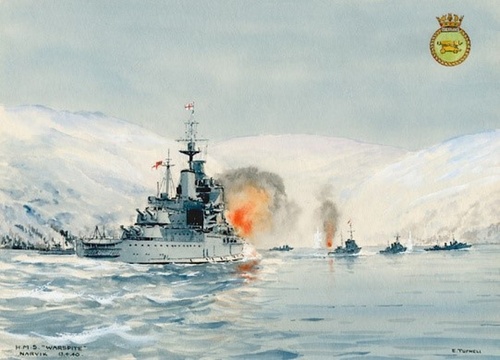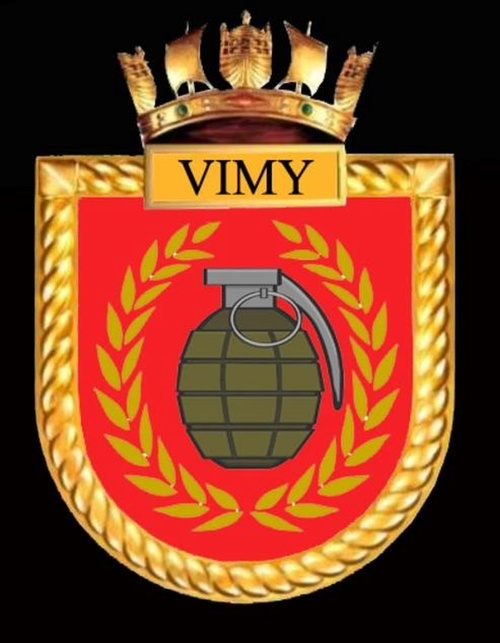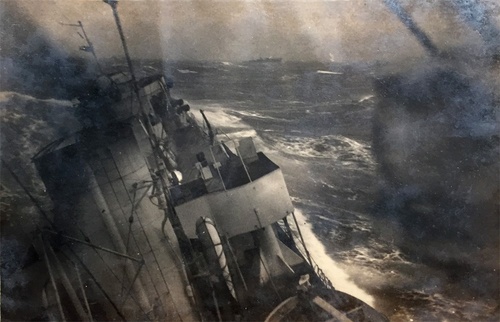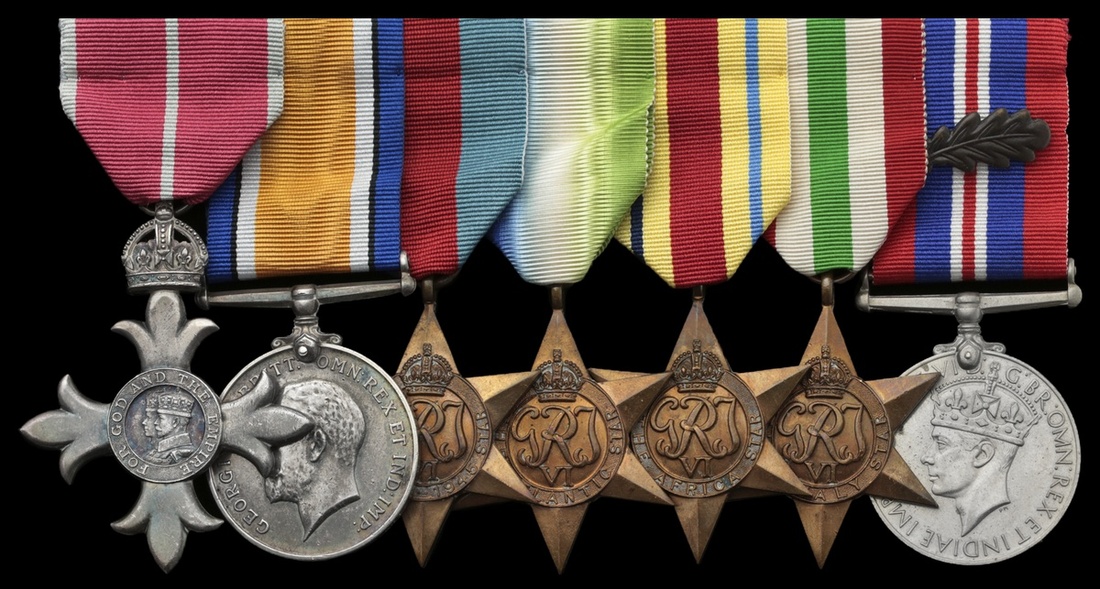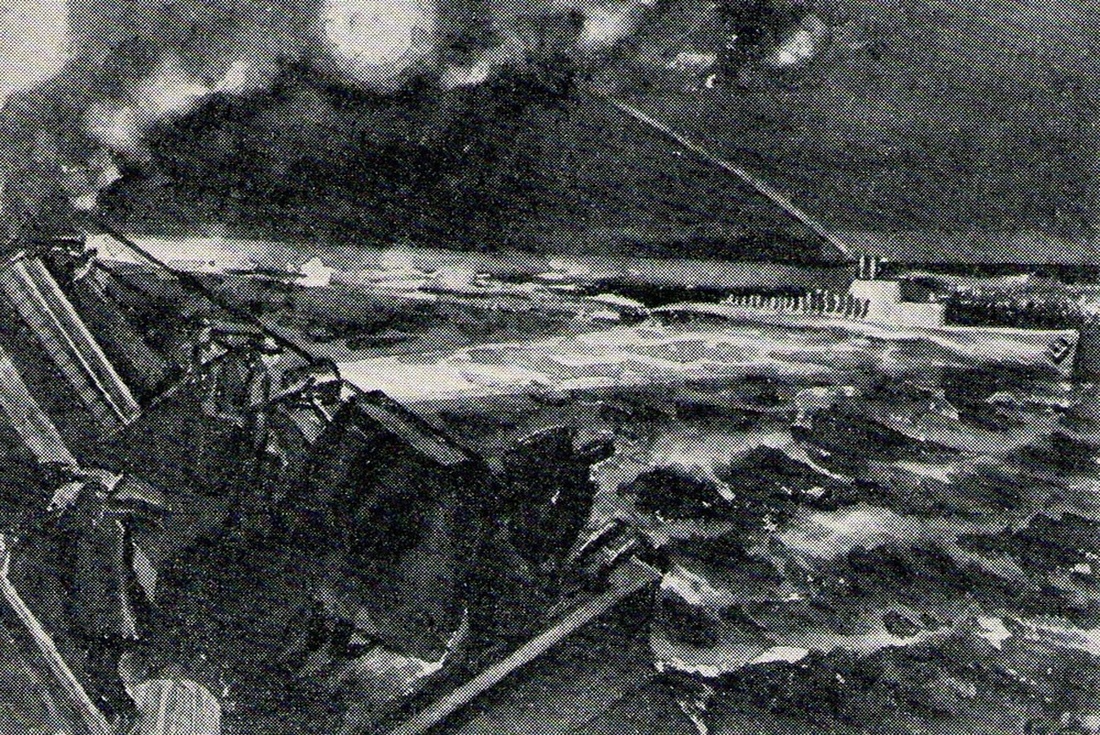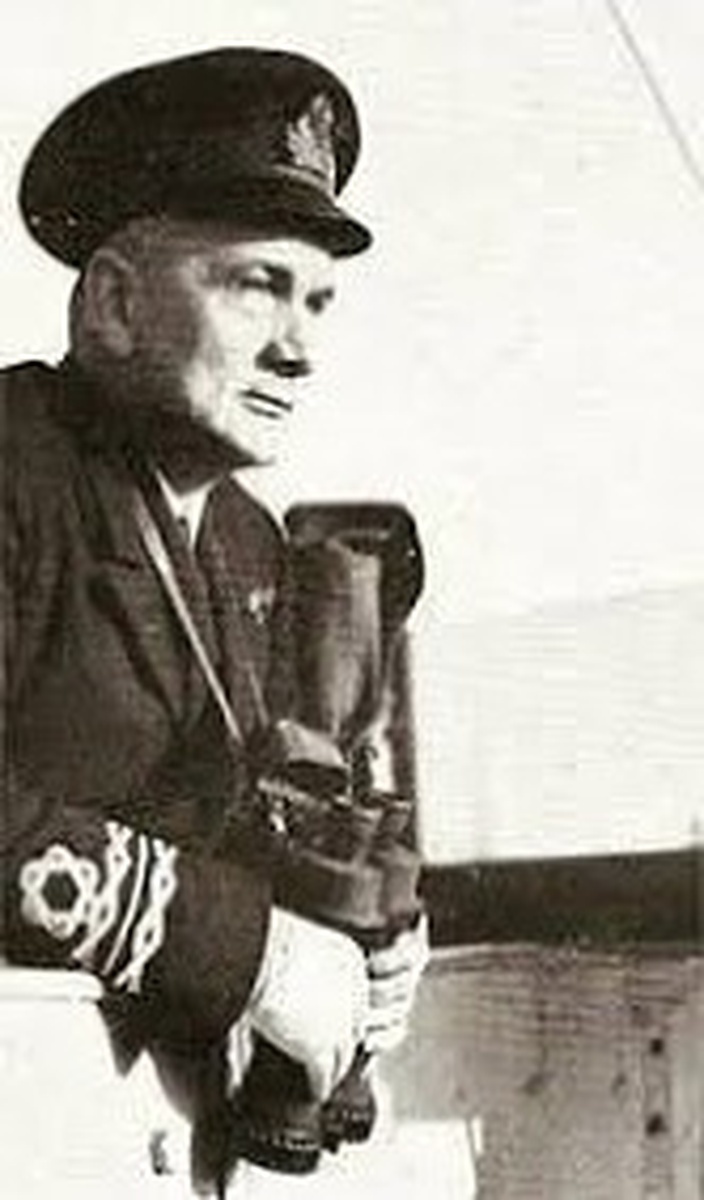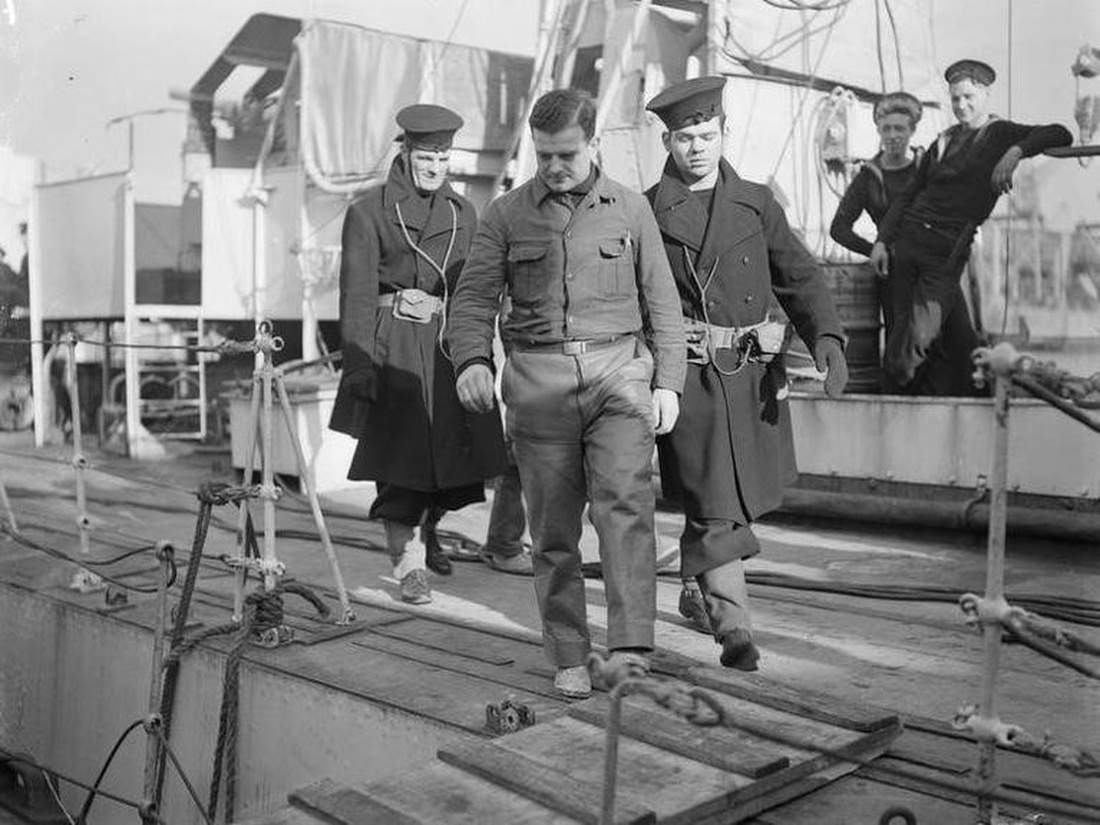Auction: 22003 - Orders, Decorations and Medals
Lot: 406
A Second World War anti-U-boat operations M.B.E. group of seven awarded to Lieutenant (E.) S. L. Leech, Royal Navy, who witnessed extensive action aboard the destroyer H.M.S. Vimy on the Atlantic run
He had earlier experienced his baptism of fire in the battleship Warspite at Narvik and Calabria, the latter engagement witnessing her score the one of the longest-range gunnery hits from a moving ship to a moving target in history, taking out her adversary - the Giulio Cesare - at a range of approximately 24 kilometres
Leech joined Vimy in October 1940 and remained likewise employed over the next three years, thereby sharing in her honours as an escort on the Atlantic run and elsewhere: having damaged the Italian submarine Luigi Torelli in September 1941, she was present at the destruction of the U-162 in September 1942 and - after joining 'Johnny' Walker's famous 2nd Escort Group - the U-187 in February 1943
Leech's skills were much in demand during both 'kills' - Vimy being damaged on ramming the U-162 - and he was twice mentioned in despatches
His captain at the time of the destruction of the U-187 was Lieutenant-Commander R. B. Stannard, V.C., R.N.R., and it was he who put his Commissioned Engineer forward for due recognition. 2nd Escort Group's legendary C.O. 'Johnny' Walker concurred, but his suggestion that Leech be decorated was overruled by Their Lordships of the Admiralty
The Most Excellent Order of the British Empire (M.B.E.), Military Division, Member's 2nd type breast badge; British War Medal 1914-20 (M. 14957 S. L. Leech, B. Art., R.N.); 1939-45 Star; Atlantic Star; Africa Star; Italy Star; War Medal 1939-45, M.I.D. oak leaf, mounted as worn, very fine or better (7)
Sydney Lewis Leech was born in Portsmouth on 26 September 1899 and entered the Royal Navy as a Boy Artificer in July 1915, when he was posted to the mechanical training establishment Fisgard. The National Roll of Honour notes that 'he rendered valuable duties but was not successful in obtaining his transfer to a fighting area before the end of hostilities'; he was awarded the British War Medal 1914-20.
In January 1929, Leech was appointed an Acting Warrant Engineer and by the renewal of hostilities in September 1939, he was serving as a Commissioned Engineer aboard the battleship H.M.S. Warspite; his promotion denied him the award of the L.S. & G.C. Medal.
Baptism of fire: Norway 1940
On 13 April 1940, Vice-Admiral William Whitworth hoisted his flag in Warspite and led nine destroyers, three sweeping mines and six in an offensive role, into Ofotfjord to neutralise a force of eight German destroyers trapped near the port of Narvik.
What followed - the second battle of Narvik - was deemed a resounding success, all the German destroyers being sunk, in addition to the U-64, which received a direct hit from 250lbs bombs dropped by the Warspite's Fairey Swordfish. For her on part, Warspite destroyed the heavily-damaged Z13 Erich Koellner with broadsides, and damaged Z17 Diether von Roeder and Z12 Erich Giese; the Diether von Roeder had to be scuttled while Erich Giese was finished off by our destroyers.
Warspite remained in Norwegian waters, participating in several shore bombardments around Narvik on 24 April and then returned to Scapa Flow.
Further honours: Calabria
A few days later, Warspite was ordered to the Mediterranean and she arrived at Alexandria before Italy entered the war on 10 June 1940. Admiral Cunningham took the fleet to sea on 7 July, hoping to draw the Regia Marina into battle by sailing towards the 'toe' of Italy to cut them off from their base at Taranto.
His ambition was achieved on 9 July 1940, when the two fleets met 30 miles from Punta Stilo at the battle of Calabria. Initially the Allied cruisers, armed with 6-inch guns, were out-ranged by the 8-inch guns of their heavier Italian counterparts and disengaged. Seeing that they were under pressure, Cunningham took Warspite ahead to assist his cruisers. The Italian cruisers turned away under a smoke screen while the battleships Giulio Cesare and Conte di Cavour then closed on Warspite before Malaya and Royal Sovereign could catch up.
During the battle Warspite achieved one of the longest-range gunnery hits from a moving ship to a moving target in history, hitting Giulio Cesare at a range of approximately 24 km. The shell pierced Giulio Cesare's rear funnel and detonated inside it, blowing out a hole nearly 20 ft. across, while fragments started several fires and their smoke was drawn into the boiler rooms, forcing four boilers off-line as their operators could not breathe.
Uncertain how severe the damage was, Campioni ordered his battleships to turn away in the face of superior British numbers and they successfully disengaged behind a smoke screen laid by Italian destroyers. The destroyers and cruisers on both sides continued shooting for half an hour, but with Malaya and Royal Sovereign coming into range the Italian fleet disengaged. Over 125 aircraft of the Regia Aeronautica attacked the ships over the next three hours, but caused no damage. Warspite returned to Alexandria on 13 July.
The "Vimy"
In October 1940, Leech joined the ship's company of the destroyer H.M.S. Vimy, soon to be refitted as a long-range escort, a role in which she would excel. Shortly after her conversion, during the course of Convoy HG 73, west of Gibraltar, on 21 September 1941, she attacked and damaged the Italian Marconi-class submarine Luigi Torelli.
This action - and further sterling work on the Atlantic run - no doubt contributed to Leech's subsequent award of the M.B.E. (London Gazette 11 June 1942).
Destruction of "U-162"
A month or two later - on 3 September 1942 - Vimy claimed her first confirmed U-Boat kill. In the company of her consorts Pathfinder and Quentin, in a position in the mid-Atlantic, north-east of Trinidad, she delivered a telling depth charge attack before ramming the U-162. A report subsequently submitted by U.S. Division of Intelligence, Washington D.C., states:
'At about 1805 on 3 September 1942, in position 12.21 N., 59.29 W., H.M.S. Pathfinder, proceeding to Port of Spain, Trinidad, in company of H.M. Ships Quentin and Vimy, obtained a sound contact to port at about 1,800 yards range. The commanding officer of Pathfinder hoisted an investigating signal and stopped his ship in order to make a considered attack if the situation warranted. At this moment hydrophone effect from a torpedo was heard ahead and a torpedo, breaking surface, circled Pathfinder wide to port and narrowly missed Quentin. Submarine contact was now firm at a range of 600 yards and Pathfinder attacked initially at 1815 with 10 Mark VII depth charges at medium settings (light charges 150 feet and heavy charges 300 feet). Sound contact was lost during the attack but regained after passing over the target. Pathfinder was preparing a second attack when Quentin hoisted the attacking signal and proceeded to fire a 6-charge pattern at 1829. Contact was then lost entirely and all three destroyers moved to westward of the attacks, commencing a search to the eastward at 1910.
Vimy again gained contact at 1930 and fired a 14-charge pattern at 1938, when contact was again lost. The destroyers then separated, Vimy being ordered to remain in the vicinity of the attacks to intercept the U-boat if it surfaced in a damaged condition, while Pathfinder and Quentin planned to carry out an extensive search to frustrate a possible attempt to escape on the surface. These manoeuvres had been plotted and were to be commenced at 2330, four hours after the last attack.
At 2327 the commanding officer of Pathfinder observed a red pyrotechnic signal to the westward, then gunflashes, another flare, a searchlight beam, and a snowflake rocket. Realizing at once that Vimy had again engaged the submarine, this time on the surface, he closed with Quentin, arriving too late to see the U-Boat go under but in good time to assist in the rescue of survivors.
Wattenberg - the U-Boat Commander - had made a fatal blunder. It has been established that he was wholly unaware of the presence of more than one destroyer in the vicinity. While it is true that he had delivered his torpedo attack before his own exact position had been revealed by sound to his intended victim, the odds were against him even in conflict with a single destroyer. That the single torpedo broke surface and betrayed his position actually sealed the fate of his boat. Heavy seas had caused the torpedo to broach, as Behrens, the executive officer, later observed bitterly.
The explosion of depth charges dropped by Pathfinder in the first attack caused a leak aft in U-162, said by one prisoner to have been in the propeller-shaft stuffing box (Fettbüchse) and, in any case, through a gland in the pressure hull. The Diesel lubricating oil supply line was damaged, the oil emptying into the bilges. The listening gear was said also to have been put out of commission. Water entered the boat and she went down by the stern, remaining, for a time, at a terrifyingly steep angle. At this time, according to prisoners, oil and water coursed through the compartments, instrument glass flew all over, and the men could not stand upright. Trim was finally restored.
The second attack, delivered by Quentin, forced open certain vents which the crew managed to close. Vimy's attack, the third, opened the same vents and they were closed again with difficulty. Meanwhile, however, water had risen in the stern bilges and it had become increasingly difficult to maintain trim. The Diesels and the electric motors had apparently not been damaged, though several prisoners maintained that the port Diesel-electric clutch was disengaged in the second or third attack. According to another prisoner, hydroplanes and rudder had also been thrown out of line. No further sound contact with the attacking vessels could be established, U-162's listening devices having been rendered ineffective.
After more than three hours, Wattenberg gave the order to surface. With water rising steadily in the boat and manoeuvre ability submerged reduced to a minimum, his only chance for escape lay on the surface.
Wattenberg contended that he surfaced to surrender. Actually, the Diesels were run at full speed (A. K.), according to several prisoners, and making a terrible noise through lack of lubricating oil. The boat still had way on when the crew went over the side.
It is believed, therefore, that Wattenberg made a final desperate attempt to elude the destroyers upon surfacing, but saw the futility of his position at once as he was caught in Vimy's searchlight, and ordered the crew to abandon ship. The men came on deck through the conning tower hatch in orderly fashion. As the first group appeared, Vimy opened machine-gun fire, and the men on the U-Boat took cover behind the conning tower. As his crew went overboard, Wattenberg fired a red star Very light to indicate their position in the water. All abandoned successfully but the engineer officer, Stierwaldt, who had gone below to scuttle the ship and was last seen trying to escape from the conning tower as the seas broke over the hatch and swept him back below. Dettmer, an enlisted man, had recently been operated on for an infected leg. His resistance was low and he probably drowned.
As U-162 settled, the commanding officer of Vimy, not certain that the U-Boat had been completely abandoned - and taking no chances with its capacity to operate further - rammed aft. U-162 then sank instantly.
Prisoners were agreed that when the order came to abandon ship the desperate condition of U-162 was not apparent to most of the crew. The large amount of water which entered aft was confined to the bilges and did not rise above the door plates. The lighting system had not failed. In fact, the only visual evidence of disaster was some broken glass on instrument panels. A number of prisoners stated, however, that chlorine gas had begun to develop at the end.'
Vimy's captain, Lieutenant-Commander Henry de Chair, was awarded the D.S.C. and Leech was mentioned in despatches (London Gazette 22 December 1942, refers). In recommending Leech, de Chair stated:
'For outstanding resource and devotion to duty when the ship was damaged by a night ramming action with U-162. Thanks to his organisation and taking charge, a clear picture of the state of affairs below was formed with the minimum of delay and the ship was able to proceed safely.'
Destruction of "U-187"
In October 1942, Vimy was nominated for service in the 2nd Escort Group, under 'Walker, R.N.' and, in the new year, she was taken under the wing of Lieutenant-Commander R. B. Stannard, V.C. Among other wartime experiences, he and Leech no doubt reminisced about the Norwegian campaign, for it was in that theatre of war that Stannard won his V.C. And, as fortune would have it, his very first trip as C.O. witnessed Vimy claim her second U-Boat.
On 4 February 1943, Vimy and the destroyer Beverley, using HF/DF, located U-187, which was shadowing Convoy SC 118 in the North Atlantic, south of Greenland at the exit of the Baffin Bay. Depth charges from the two destroyers sank the submarine some 600 miles south-east of Cape Farewell, Greenland. Nine of U-187's crew perished, including the commander, but Vimy and her consort rescued 45 men from the water.
For a recording of Stannard's description of this memorable event, see:
https://www.youtube.com/watch?v=y-mHYB1Y_rE
He was awarded the D.S.O. and recommended Leech for another 'mention':
'He was constantly in the Engine Room during attacks on enemy submarines from the 4th to the 7th February 1943, and saw that instant movements were given during the towing of the F.F.S. Lobelia in rough weather.'
The legendary 'Johnny' Walker had an even higher opinion of Leech's deeds:
'I consider that this officer's services would be more suitably recognised by the award of a Decoration. F. J. Walker, Captain (D), Liverpool.'
In the event, even after the recommendation of one of the great heroes to emerge from the Battle of the Atlantic, Leech received a "mention" (London Gazette 18 May 1943, refers).
Post-war, Leech was appointed a Lieutenant (E.) and he was placed on the Retired List in September 1949. He died at Waterlooville, Hampshire on 6 October 1982.
Subject to 20% VAT on Buyer’s Premium. For more information please view Terms and Conditions for Buyers.
Sold for
£400
Starting price
£350


